
General Characteristics Of Fibromyalgia
The word fibromyalgia is made up of a Latin word ‘fibro’ which means the fibrous tissue and Greek words ‘myo’ which stands for muscles and ‘algia’ which means pain. For this, we understand that fibromyalgia is a disease of the fibrous tissue characterized by pain and tenderness of the muscles. The American College of Rheumatology, in 1990, has established two major criteria for a condition to be termed as fibromyalgia: • The patient complains of generalized pain on both sides of the body above the waist and both sides of the body below the waist for duration of more than three months. • Pain in at least 11 of 18 tender points on different parts of the body. The patient complains of soreness and stiffness of various muscles, tendons and ligaments without the presence of any inflammation or damage to these structures. The condition is non- life threatening and does not have any bearing on the internal organs.
- Important notification about information and brand names used in this slideshow!
- Photo courtesy of Norman K. Poppen by Picasa : lh6.googleusercontent.com/-QV1BC8UfCqk/UFlch41pQ3I/AAAAAAAAAL0/3qHub0IqeUg/s400/colorful-pain-syndromes-09-pg-full.jpg
- www.rxlist.com/fibromyalgia_slideshow_learn_about_fibromyalgia/article.htm
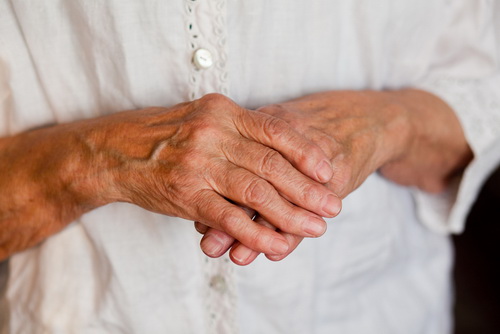
Fibromyalgia Is An Arthritis Related Condition
Physicians consider fibromyalgia as an arthritis related condition. This implies that although the condition resembles arthritis but it is not arthritis per se. Arthritis has been defined as the inflammation of one or more joints of the body. This results in the destruction of the cartilage present in the joints leading to their pain, swelling and stiffness. Fibromyalgia, on the other hand, is a condition involving primarily the muscles, tendons and ligaments. There is pain but no inflammation. As fibromyalgia, like arthritis, can also lead to tenderness, stiffness and fatigue and make it difficult for a person to carry out his daily chores, it is called as arthritis related condition.
- Important notification about information and brand names used in this slideshow!
- Photo courtesy of Summit Medical Group by Picasa : lh6.googleusercontent.com/-Q0PZpPcqb6k/UYOvGYgRlnI/AAAAAAAAD24/PVaxeeuA-Cs/s1000/Y5y7Zp.jpg

Fibromyalgia Is More Common In Women
Although fibromyalgia can affect anybody including men, children and the elderly people, for some unknown reason, it has a special predilection for women. It is said that women have a ten times higher likelihood of developing the disease. In fact, statistics show that 12 million American suffer from fibromyalgia. Of these, more than 80% are women. The most common age for fibromyalgia to affect women is between 35 and 55 though it may affect any women between the ages of 25 and 60. Fibromyalgia may occur in isolation or it may be found in association with other conditions like systemic lupus erythematosus (SLE) or rheumatoid arthritis (RA). Apart from gender discrimination, the prevalence of fibromyalgia also varies according to place. While it affects 4% of all Americans, in Britain and Sweden, it is found in 1% of the entire population.

Causes Of Fibromyalgia
Researchers have not been able to exactly pin-point the causes behind fibromyalgia. It has been seen that patients of fibromyalgia have an increased levels of substance P, a chemical nerve signal. That is the reason why patients of fibromyalgia are so sensitive to pain. Similarly, researchers have been able to find elevated levels of nerve growth factor in the spinal fluid and low level of circulating growth hormone and serotonin, a neurotransmitter, in the brains of patients suffering from fibromyalgia. Recent studies have shown the amplification of the pain signals seen in patients diagnosed with fibromyalgia is because of dysfunction of the central nervous system. However, the exact pathophysiological cause of fibromyalgia is yet to be found.
- Important notification about information and brand names used in this slideshow!
- Photo courtesy of Beating Neuropathy by Picasa : lh5.googleusercontent.com/-2oAdHMhu1zE/UY_L7_DuctI/AAAAAAAACQo/K3sINvz1eRs/s618/25yUE.jpg
- my.clevelandclinic.org/disorders/fibromyalgia/hic_the_facts_about_fibromyalgia.aspx

Common Symptoms And Signs Of Fibromyalgia
Apart from the pain, tenderness and stiffness of muscles, other symptoms and signs of fibromyalgia vary from patient to patient. Some of the other common symptoms seen I fibromyalgia include migraine and tension headaches, pain in abdomen which can be attributed to irritable bowel syndrome, an irritable bladder associated with increased frequency and painful micturition, pain in the pelvic region, chronic fatigue, increases sensitivity to noise, restless leg syndrome, increased temperature sensitivity, anxiety and depression, and pain in the temporo-mandibular region. As all these signs and symptoms are subjective and vary in different patients of fibromyalgia, there is no definite laboratory test to diagnose this condition.
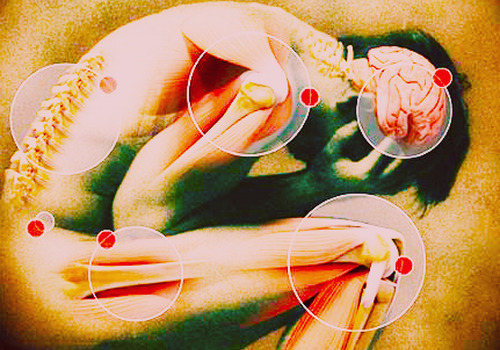
Tender Points Associated With Fibromyalgia
Tender points of fibromyalgia are those points on the body which remain chronically the focus point of pain and stiffness in a particular part of the body. These points are unlike the trigger points associated with certain diseases wherein the pain is initiated by pressing at such points. There are 18 such tender points in the body in the patients of fibromyalgia (nine on bilaterally symmetrical parts on each half of the body). These points are: • On right or left side, at the back of the neck, just below the hairline. • On either side of the front of the neck, just above the collar bone. • On either side of the chest wall, just below the collar bone. • On either side of the upper portion of back, where the neck joins the back. • On either side of the spine, between the shoulder blades. • On either side of the lower back, below the waist line. • On either of the elbows, just above the joint. • On right or left buttock, just below the hip bones. • Bilaterally on the knees just above the joint line. According to the American College of Rheumatology, for a patient...
Tender points of fibromyalgia are those points on the body which remain chronically the focus point of pain and stiffness in a particular part of the body. These points are unlike the trigger points associated with certain diseases wherein the pain is initiated by pressing at such points. There are 18 such tender points in the body in the patients of fibromyalgia (nine on bilaterally symmetrical parts on each half of the body). These points are: • On right or left side, at the back of the neck, just below the hairline. • On either side of the front of the neck, just above the collar bone. • On either side of the chest wall, just below the collar bone. • On either side of the upper portion of back, where the neck joins the back. • On either side of the spine, between the shoulder blades. • On either side of the lower back, below the waist line. • On either of the elbows, just above the joint. • On right or left buttock, just below the hip bones. • Bilaterally on the knees just above the joint line. According to the American College of Rheumatology, for a patient to be diagnosed as suffering from fibromyalgia, there must be tenderness present on palpation in at least 11 of these 18 tender points.
- Important notification about information and brand names used in this slideshow!
- Photo courtesy of Kinga Vereczkey-Porter by Picasa : lh3.googleusercontent.com/-W_wvx1bGVEs/UEBY9rU4OoI/AAAAAAAAAQk/hc1Ipcq1PrA/s431/help-with-fibromyalgia.jpg
- health.nytimes.com/health/guides/disease/fibromyalgia/print.html

Chronic Fatigue Associated With Fibromyalgia
Chronic fatigue is a complaint in almost 90 percent of patients suffering from fibromyalgia. This can be attributed to the impaired non rapid eye movement phase of the sleep cycle seen in these patients. Normal sleep cycle consists of two phases which keep alternating. They are the rapid eye movement phase (REM) and the non-rapid eye movement phase (non-REM). The REM phase is associated with dreams while the non-REM phase in when we go into a deep slumber and our whole body relaxes. In patients suffering from fibromyalgia, the non-REM phase of sleep is impaired. So the patient cannot relax completely and gets up feeling lousy and not fresh irrespective of the number of hours he has slept. Patients of fibromyalgia also have an increased likelihood of suffering from periodic limb movement disorder (PLMD). In this condition the leg muscles tend to contract involuntarily every 20 to 40 seconds of sleep. This may wake up the patient further disturbing the sleep.

Pain Associated With Fibromyalgia
Pain is the most persistent feature of fibromyalgia. In a patient suffering from fibromyalgia, pain should be present in all the four quadrants of the body (both sided above and below the waist), with special sensitivity at the tender points. It is believed that these patients have an unusually low threshold of pain. This can be attributed to elevated levels of substance P, a nerve chemical signal in the spinal fluid of patients suffering from fibromyalgia. Because of this chemical, researchers feel that patients of fibromyalgia are able to perceive those stimuli as painful which are considered as normal by other people. These patients are extra-sensitive to noise and any changes in weather and their pain is aggravated by these factors.

Emotional Problems Associated With Fibromyalgia
It is believed that almost one third of the patients suffering from fibromyalgia have depression. Many of these patients also complain of mood swings and lack of concentration. Other symptoms include memory problems and irritability. These emotional problems can lead the patient to pull out of all social activities. Often the main objective of the treatment for fibromyalgia is pain relief. Emotional problems related to the condition are usually ignored. Researchers are not very sure about the reason behind emotional disturbances and depression in fibromyalgia but they opine that low levels of serotonin in the brain may be a cause. Prolonged depression in patients of fibromyalgia may flare up the other symptoms of the disease.

Conditions Similar To Fibromyalgia
The main features of fibromyalgia include muscle pain, fatigue, and general malaise. There are many other diseases whose symptoms include these features and hence, they are often confused to be fibromyalgia. Some of these conditions include: Chronic fatigue syndrome: The main differentiating feature is the absence of tender points. The muscle pain is also a less prominent feature in chronic fatigue syndrome. Myofascial Pain Syndrome: The main differentiating feature is that unlike tender points in fibromyalgia, myofascial pain syndrome has trigger points. Pain and muscular twitching are seen when pressure is applied at these points. Major depression: Depression is commonly seen in patients of fibromyalgia but it appears to be a result of pain and fatigue and is usually temporary unlike major depression. Multiple Chemical Sensitivity (MCS): The symptoms are similar to fibromyalgia but the condition is usually a result of exposure to chemicals. It is a chronic condition involving multiple organ systems. Apart from these several other conditions which may be confused with fibromyalgia include hypothyroidism, vitamin D insufficiency, Paget’s disease, hypercalcemia, Epstein Barr Virus infection and cancer.
- Important notification about information and brand names used in this slideshow!
- Photo courtesy of Elizabeth Ann Colette by Flickr : www.flickr.com/photos/fromcolettewithlove/514765623/
- health.nytimes.com/health/guides/disease/fibromyalgia/print.html






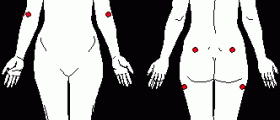










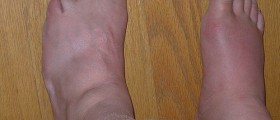




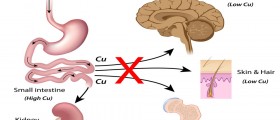
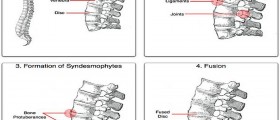



Your thoughts on this
Loading...